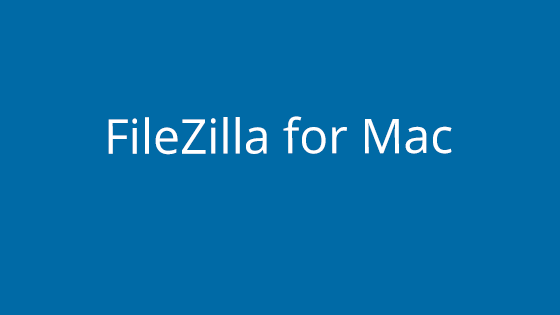

- #Where does filezilla for mac store passwords install
- #Where does filezilla for mac store passwords password
- #Where does filezilla for mac store passwords Pc
- #Where does filezilla for mac store passwords free
Note: The files on the left side are your computer’s files. Now press the “ Quickconnect” button on the far right, and if everything went well you should see this:
#Where does filezilla for mac store passwords password
If you’re here from the 351Elec days, try that password first
This will depend on when you flashed your firmware. While it may be a bit intimidating, don’t worry, it’ll become second nature soon enough.įirst, let’s set the settnigs so we can connect to our RG device! On top of the window you will see a field called “ Host”, “ Username”, “ Password” and “ Port”. Open FileZilla, and you should be greeted with this screen. #Where does filezilla for mac store passwords install
It will download an application that will then download and install the latest version of Filezilla for you. Then scroll down and click the “Get your Ninite” button.

Alternately, you can download it from Ninite. Under Quick download links, click on Download FileZilla Client. You can download FileZilla from the FileZilla Website.
#Where does filezilla for mac store passwords free
If you already have FileZilla installed, feel free to skip the instalation instructions! Installing FileZilla This process will require a 3rd party application. Press OK and you should see a window with all your files! Remember these are transferred in real time! (Replace the example IP with yours, don’t forget!!) \\192.168.1.81\config – For your config files for emulators, games, etc….

Now, remember that IP Address we got above? This is where we will need it!
#Where does filezilla for mac store passwords Pc
Once enabled, go back to your PC and Press the Windows Key on your keyboard and the “ R” key. On a Windows PC, this process is simple, first make sure that in the “Network Settings” Screen ( see above) Samba is enabled.
First item should be your IP Address (Example : 192.168.1.81). In order to figure this out, in the console selection screen, press START. Your computer and RG device are connected to the same network. Network transfer (Via WIFI or OTG Network adapters)īefore we begin on this journey, we need to make sure that: This is to ensure any pending file operations are done. Just remember to unmount / eject it once you’re done moving files, and in a terminal (for good measure) run “sync” and only eject your SD Card once it is done. Depending on your install or distro, inserting your SD card might be detected by your Window Manager, and should be fairly user friendly, or not shown completely and you’ll have to mount it yourself. With Linux things are a bit more complicated. This will remove some residual files OSX creates and avoids issues running your games and homebrew Linux In the main menu of your RG device, navigate to the tools section and select “ Run Remove. The process after this is simple, move files around, and when you are done, make sure to “eject” your SD card by dragging it to your waste bin (When dragging, your waste bin should develop an eject button).īecause of OSX and its inner-workings, you have one more step to do once your device boots. When you insert your SD Card, it should show as an icon on your desktop. Move your files around, once you’re done, make sure you remove your card safely from your computer (should be an icon on your system tray), and reinsert it onto your RG device. Usually labeled “ AMBRELC” for your OS files, and “ STORAGE” for your roms, bioses files, etc. Once you insert the SD card, you should hear a little jingle and it should appear under My Computer (or “This PC”). Remove the SD card with the files you want to access and insert it onto a Memory Card reader on your computer of choice. If you want to access your game files, get your 2nd SD Card (the rightmost one!), OS Files usually go on the 1st SD card (The one on the left!) Does your RG device have two SD card slots? First off, make sure your RG Device is turned off fully (Check the LED indicator, if it’s off, your device is off). Network transfer (Via WIFI or OTG Network adapters)ĭirect transfer (SD Card onto your Computer). Direct transfer (SD Card onto your Computer). Transferring files to/from your RG Device







 0 kommentar(er)
0 kommentar(er)
